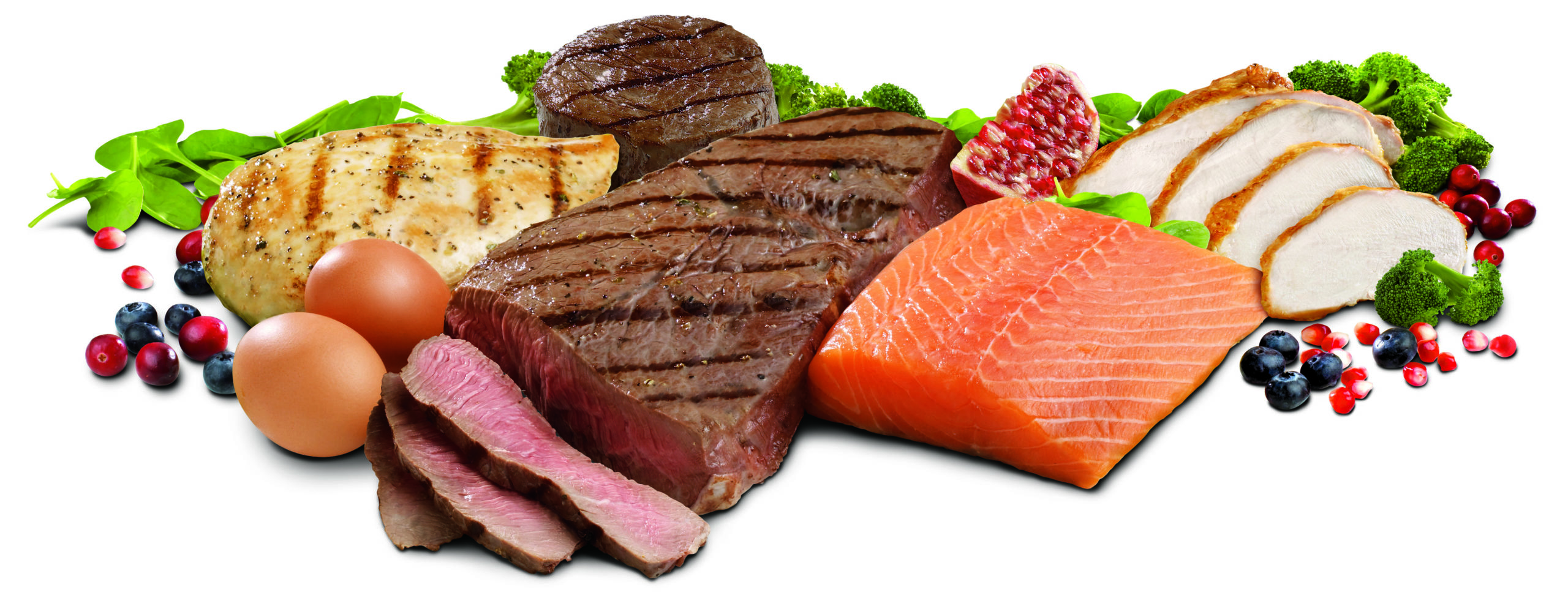Protein Requirements for Athletes

Before we talk about how much protein players should be consuming, let’s talk about what exactly protein is, why it is essential, and what is does for the body. The word “protein” comes from a Greek word meaning “of prime importance.” Proteins are made up of the following elements:
- Carbon
- Hydrogen
- Oxygen
- Nitrogen
Nitrogen in protein accounts for one of the biggest differences between proteins, carbohydrates, and fats. Proteins are all made up of 20 different amino acids, known as the building blocks of protein, and the human body can synthesize an estimated 10,000-50,000 proteins from those 20 amino acids.
Think of the alphabet as the amino acids and the words that you form from letters as proteins. Of the 20 amino acids, there are 9 that are considered essential and 11 that are considered nonessential. The body can synthesize the 11 nonessential amino acids in sufficient quantities, so they are not considered a dietary requirement. However, the 9 essential amino acids cannot be produced in the body in sufficient quantities to meet the body’s needs making it important to consume those 9 essential amino acids as part of a regular diet.
In order for bodies to build and repair muscle, it is important to consume all 9 of the essential amino acids to stimulate muscle protein synthesis. Consumed proteins are denatured in the stomach. (“To denature” is just a fancy word for digestion.) Denaturation can also happen when proteins are exposed to heat, like when you crack an egg into a hot frying pan and the egg whites change from a clear jelly to a firm white color.
Consuming enough caloric energy is important to stimulate muscle growth and repair. If an athlete is not eating enough calories from fat or carbohydrate, then his body will use amino acids as energy rather than for building muscle.
Complete Versus Incomplete Protein
Incomplete proteins do not contain all 9 essential amino acids. Some examples are those found in plants and grains. Some plants and grains are rich in the amino acids that others lack, so it is possible to form a complete protein source by eating certain incomplete protein combinations. Complete proteins, on the other hand, have sufficient amounts of all 9 essential amino acids. Animal meat like chicken, steak, or fish are all great sources of complete proteins.
Nitrogen Balance
The body needs to be in a positive nitrogen balance in order to build muscle. But, what exactly is a nitrogen balance? There are three nitrogen balance situations that can occur in the body:
- Positive nitrogen balance: when nitrogen (protein) consumption is greater than excretion. This is where we want to be when gaining muscle or recovering from training.
- Negative nitrogen balance: when protein consumption is falling short of the needs of the body. This is what we want to avoid because we are losing muscle.
- Neutral nitrogen balance: when protein intake exactly meets the demands of the body.
Since a neutral nitrogen balance is ideal, how do we get there? The recommended daily allowance for protein for the general population is 0.8 grams of protein per kilogram of bodyweight. This roughly equals 114 grams for a 200-lb. person. We are not considering the general population, though. In order to determine the protein needs of a baseball player, we need to understand the demands placed on the body of baseball athletes.
Baseball is a ground-based, intermittent-power sport. A baseball swing or a pitcher’s wind-up requires a large burst of energy over a short period of time. In order to be as strong and as powerful as possible, it is crucial to train for power both in practice and in the weight room. In order to fuel muscle to perform and recover, it is recommended that a power athlete consume 1.3-1.8 grams of protein per kilogram of bodyweight. For a 200-lb. athlete, this looks like 118-164 grams of protein. That’s a pretty large window, and which side of that window a baseball player should be on changes based on what phase of training or competition he is in.
In our next discussion, we will examine varying needs in protein intake based on training season. We will also take a look at how to eat that much protein in one day.
This article was written by Driveline Strength Trainer Gabe Juarez
Comment section
Add a Comment
You must be logged in to post a comment.
Mike Kaestle -
Very clear, thank you for your post. Quick question – how many grams of protein are in an ounce (28 grams) of chicken (or other meat)? Thank you
Tom -
please provide an example using the Grams of Protein per meal.
Protein Needs Based on the Season - Driveline Baseball -
[…] our previous post, we laid the groundwork for understanding how much protein baseball athletes should consume. This […]
Jensen -
You missed the conversions from lbs to kg in your last two paragraphs. Otherwise it’s a nice article that would serve as a very helpful resource for athletes.